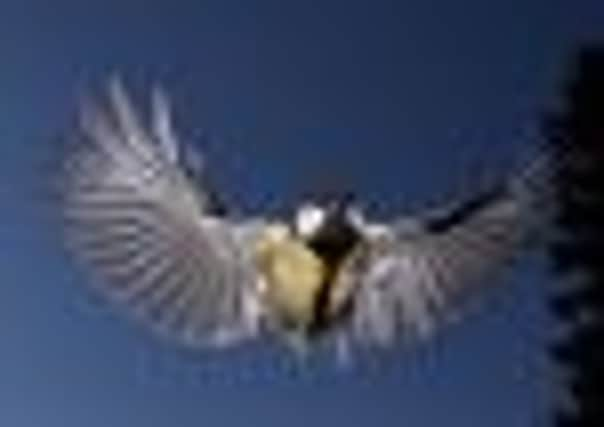Garden birds and the great tit bully


The great tit will even fan its wings and hiss menacingly if the interloper hasn’t yet heeded the message about the need for a bit of elbow room. Many years ago when I used to mist net and ring birds, the great tit was by far the most aggressive species to hold in the hand and would deliver a painful nip if given half the chance. But what was even more striking was its truly astounding plumage, a vibrant palette of yellow, green, black and white.
The blue tit too can show the same aggressive traits as the great tit and the local English name “Billy biter” refers to the manner in which it will peck and hiss to protect its nest. But despite the frequent bickering between the two species, great and blue tits are generally quite sociable birds during winter and are often found together in mixed flocks that roam our gardens, hedgerows and woodlands. It is a case of safety in numbers with the many pairs of eyes more likely to spot an approaching predator. Flocking also increases the chances of finding good feeding areas.
Advertisement
Hide AdAdvertisement
Hide AdIndeed, when it comes to locating food all our tit species are excellent opportunists and will search out every nook and cranny for small invertebrates and seeds. The blue tit took this trait of opportunism to a new level in the recent past when it developed the widespread skill of pecking the caps of milk bottles left on doorsteps so as to get at the cream. The habit was first noted in Southampton in 1929 and by 1947 had spread to Scotland with the blue tits learning from each other. Stefan Buckzacki in Fauna Britannica states that milk delivery vans were sometimes regularly followed by flocks of birds and doorsteps were often littered with fragments of bottle tops.
This is a trait that has been lost with the demise of milk bottles and doorstep deliveries, but the blue tit does seem to have the innate habit of pecking at all kinds of objects, The early 20th century ornithologist Thomas Coward noted that “in some years blue tits become a nuisance by entering houses and tearing wallpaper, books and fabrics”.
Not to be outdone, the other common tit species found in our gardens – the coal tit – has developed its own rather endearing way of ensuring constant food during winter. It is a compulsive hoarder and in no time at all will empty a feeding dispenser full of sunflower seeds, shuttling back and forwards with quite astonishing zeal so as to hide the seeds in crevices to eat later when other food is less plentiful.
Scotland has three other much scarcer species of tit – the marsh tit, the willow tit and the crested tit. The former is only found in the extreme south-east of the country in Berwickshire (and occasionally East Lothian), whereas the willow tit occurs sporadically in Dumfries & Galloway, with a few outlier populations elsewhere. Both species, which are very similar in appearance to each other, are declining. The crested tit is a fascinating species that is resident in pine woods in some parts of northern Scotland.
Many Scottish gardens also have long-tailed tits as regular visitors. Although not closely related to our other tits, they are incredibly attractive birds that can be likened to wee bundles of fluff with a long tail. They hang around in small roving flocks at this time of year and will descend upon a bird table en masse for several minutes before suddenly heading on their way again. Long-tailed tits visit our bird tables much more regularly than they used to and it would seem that they too are catching onto the opportunism fad in a big way.